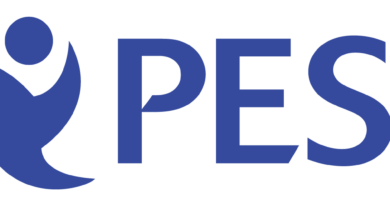How E&S Insurance Can Protect Your Business from Unique Risks

E&S (Excess & Surplus) insurance is a specialized form of coverage designed for unique risks that standard insurance policies typically exclude. These include high-risk industries, emerging technologies, or huge claims that exceed traditional policy limits. Understanding that every business comes with unique risks can be daunting, but this is where E&S insurance steps in. Such policies are tailored to meet the exact specifications of the risks businesses face that do not fit the conventional mold. E&S insurance is crucial for those operating in niche markets or developing industries. The ability to offer tailored solutions for unique problems sets excess and surplus lines apart from traditional insurance policies.
Furthermore, E&S insurance operates in a regulatory environment different from that of admitted insurers. While admitted insurers must adhere to state regulations and offer standardized policies, E&S insurers enjoy greater flexibility in underwriting and pricing, enabling them to craft bespoke policies. This flexibility makes E&S coverage a viable and necessary option for businesses deemed too risky by conventional standards. Industries such as construction, technology, and entertainment often find E&S policies particularly beneficial because these sectors face complex and unconventional risks. The specialized nature of E&S insurance is discussed extensively in forums like the Insurance Journal, which sheds light on the depth and breadth of this insurance market.
Who Needs E&S Insurance?
Businesses operating in high-risk sectors or those with atypical needs are prime candidates for E&S insurance. For instance, construction, cyber technologies, or entertainment companies often require this specialized coverage. This insurance is essential for those facing risks considered uninsurable by standard providers. Highly specialized industries, such as biotechnology firms or oil and gas operations, need insurance that addresses their unique liabilities, often outside traditional insurance policies’ scope. Take, for example, a company dealing with hazardous materials. Traditional insurance policies may not cover the extensive range of risks associated with the handling, transporting, and storing of dangerous substances. Through an E&S insurance policy, such a company can get coverage tailored to its specific needs, including environmental liability and spill response coverage. Similarly, tech startups working with groundbreaking technologies or intellectual property might face unique challenges that make standard liability insurance inadequate. An E&S insurance policy can mean the difference between operational continuity and catastrophic loss for these types of businesses.
Benefits of E&S Insurance
One of the most significant advantages of E&S insurance is its flexibility in covering unique risks. This kind of insurance provides businesses with customized solutions to mitigate potential financial losses from unforeseen events. Standardized insurance policies often have limitations and exclusions that do not adequately cover the specific risks faced by certain businesses. In contrast, E&S insurance can fill those gaps by providing coverage for unconventional and specialized risks. Another vital benefit is securing high-value policies that exceed standard insurance limits. This is particularly advantageous for companies with large-scale projects or operations with substantial financial risk. For example, a construction firm working on a multi-million-dollar infrastructure project must be insured. E&S insurance allows these businesses to obtain the necessary coverage limits, safeguarding them from massive liabilities. Moreover, this type of insurance can be adapted to meet evolving risks, offering an additional layer of security and peace of mind.
How E&S Insurance Works
E&S insurance operates outside the regulatory boundaries that insurers must adhere to, allowing for greater flexibility in underwriting and pricing. This means that E&S insurers can tailor policies based on the insured’s specific needs and risk profiles rather than offering one-size-fits-all solutions. While this flexibility is a significant advantage, it also contributes to the higher cost of E&S insurance compared to conventional policies. However, the tailored protection and comprehensive coverage justify the expense for many businesses. Policies are generally crafted through a detailed underwriting process. Insurers conduct thorough risk assessments to identify the unique exposures faced by the business. This process can include site visits, interviews with key personnel, and a review of operational practices. Based on the findings, insurers design a policy that provides coverage while setting appropriate premiums. This meticulous approach ensures that every potential risk is accounted for for high-risk sectors, offering businesses robust protection against unforeseen events.
Common Types of E&S Coverage
Several E&S insurance policies are available, each designed to address specific risks unique to certain industries and business operations. The most common types include:
- Professional Liability Insurance: Covers claims made against professionals for negligence, errors, or omissions in their services.
- Directors and Officers (D&O) Insurance: Protects executives against claims resulting from their managerial decisions.
- Cargo and Marine Insurance: Provides coverage for goods transported over water or in transit.
- Cyber Liability Insurance: Protects businesses from data breaches and cyber-attack risks.
- Environmental Liability Insurance: Covers liabilities arising from environmental damage caused by business operations.
Each type of E&S coverage offers specific benefits tailored to the needs of different industries. For example, cyber liability insurance is becoming increasingly crucial as businesses rely more on digital technologies. With the rise in data breaches and cyber-attacks, having a specialized policy that covers these risks is essential for mitigating financial loss and reputational damage. Similarly, environmental liability insurance is indispensable for companies operating in sectors that impact the environment, such as manufacturing and energy production.
Choosing the Right Policy
When selecting an E&S insurance policy, it’s crucial to consult with industry experts who can help identify the specific risks your business faces. By understanding these unique exposures, you can choose a comprehensive coverage policy. Working with an experienced insurance broker can be immensely valuable in this process. Brokers have in-depth knowledge of the E&S market and can offer insights into the best policies to meet your needs.
Reading customer reviews and consulting with experienced agents are also excellent steps in making an informed decision. Reviews can provide real-world insights into how different policies perform and the level of customer service various insurers offer. Additionally, seeking recommendations from peers in your industry can help you find a reliable insurer. The goal is to select a policy that meets your current needs and adapt to future changes and risks. Taking the time to evaluate your options thoroughly ensures that you get the best possible protection for your business.
Real-World Examples
Consider a tech startup specializing in artificial intelligence. Given the nascent nature of AI technologies, they may face unique liabilities not covered by standard insurers. Through an E&S insurance policy, they can secure coverage for intellectual property disputes or data breaches that would otherwise be challenging to insure. For instance, if the company develops a new AI algorithm and faces a lawsuit claiming patent infringement, its E&S policy can provide legal and financial support to navigate the situation.
Similarly, a construction company dealing with complex and high-risk projects may benefit from the flexible coverage that E&S policies offer. For example, if the company is building a large commercial structure and encounters unforeseen geological conditions that cause project delays, an E&S policy can cover the associated costs. A relevant case can be found in a report by Reuters, which highlights how E&S insurers take on risks that mainstream insurers shy away from. These real-world examples underscore the critical role that E&S insurance plays in providing robust protection for businesses operating in unpredictable and high-risk environments. E&S insurance enables businesses to pursue innovative projects and new opportunities without conventional insurance limitations by offering tailored coverage that addresses specific risks.
Final Thoughts
E&S insurance provides critical protection for businesses that face unique and high-risk challenges. By understanding the needs of your industry and consulting with specialized insurance professionals, you can secure the coverage needed to protect your business against unprecedented risks. Whether you are a startup venturing into new technologies or an established company dealing with complex projects, having the right E&S policy can safeguard your operations from unforeseen events and financial losses.
Ultimately, the right E&S policy offers peace of mind and financial security in an unpredictable world. By investing in a customized insurance solution, you can focus on growing your business with the confidence that you are protected against even the most unusual risks. With the ever-evolving landscape of business risks, E&S insurance remains vital in forward-thinking companies’ comprehensive risk management strategy.



